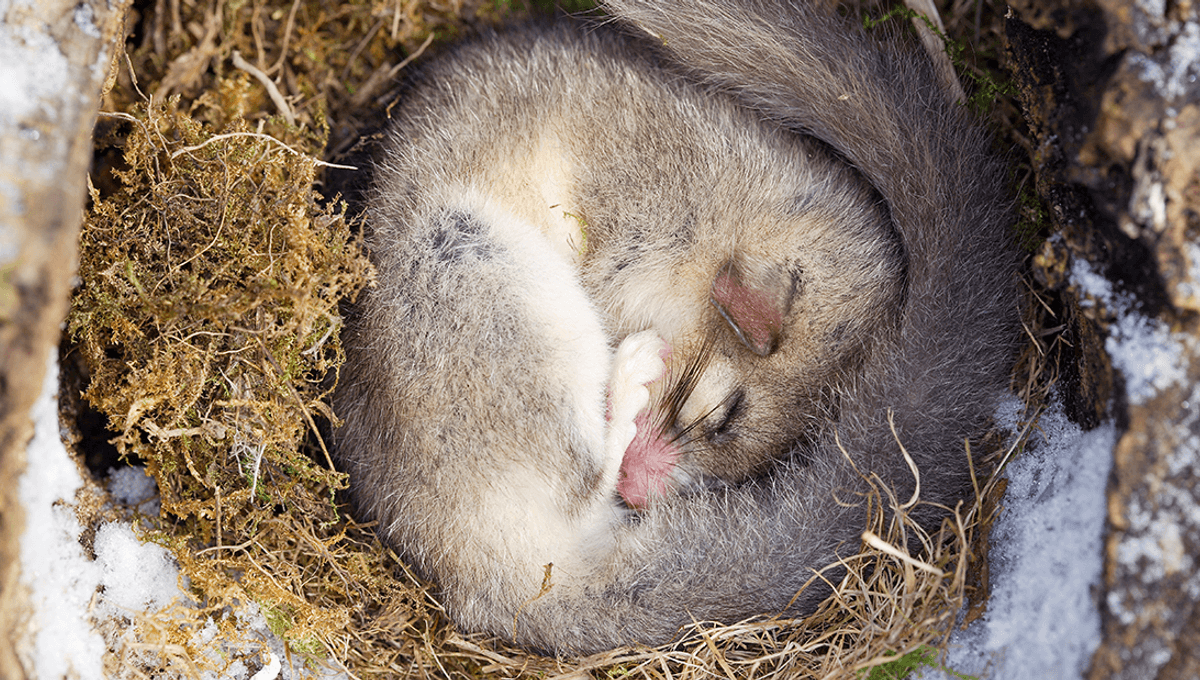
The animal kingdom has a multitude of tricks for surviving harsh weather conditions and long, cold winters. From snuggling down in a cave to sleep away the worst of the weather, to shutting down all but the most basic of functions as a way to save energy, we break down the differences between the ways these animals are surviving.
What is hibernation?
When the temperatures are lower and food is harder to find, animals from mice to birds and bats go into a long deep sleep. In the UK, the Wildlife Trust lists only three species that truly hibernate: bats, dormice, and hedgehogs.
Hibernation means the body’s processes will slow down almost completely, with reduced heart and breathing rates. The metabolic rate is lowered as a means to save energy, and animals survive in this state by using the fat reserves that they have built up in the autumn. Animals in hibernation look almost dead and most likely feel cold to the touch. In fact, according to National Geographic, the arctic ground squirrel (Spermophilus parryii) can cool their bodies to sub-freezing temperatures for hibernation.
In true hibernation, the heart rate is also lowered. According to Scientific American dwarf lemurs (genus Cheirogaleus) in Madagascar have a typical active heart rate of around 180 beats per minute. During hibernation, this can go down as low as 4 beats per minute.
What is torpor?
Torpor is hibernation’s most overlooked cousin. In this state, an animal’s metabolism, heart rate, and breathing all slow down in a similar way to hibernation. However, torpor is more easily entered and emerged from and doesn’t last as long as true hibernation. A torpor state can even be entered into every day and is most often a trend in endotherms living in arid areas.
The fat-tailed dunnart (Sminthopsis crassicaudata) is a carnivorous marsupial and can use this daily torpor to survive when its diet of insects might be in short supply.
Birds like the common poorwill (Phalaenoptilus nuttallii), whose name means “sleeping one”, can also enter torpor, writes the Audubon Society. Compared to hibernation, topor does not last as long, and does not have quite the same drastic effect on the internal temperature of the body.
Do bears hibernate?
Many people get taught that bears hibernate through the long winter but scientists aren’t sure whether this is strictly true. It could be that bears are more likely in torpor since their metabolic rate is massively reduced but their body temperature doesn’t fall. It could be that a reduction in body temperature would be too hard to wake up from.
What is brumation?
Reptiles, including snakes, and amphibians do undergo a kind of state similar to hibernation called brumation. In North Carolina and Texas, crocodiles were seen brumating under sheets of frozen ice with just their snouts visible. This again shows the key signs of lowered breathing and metabolic rate, but the animals will continue to drink, but not eat, and are not in quite as deep a sleep state.
What is aestivation?
While, typically, brumation, torpor, and hibernation are seen as ways to survive cold weather, there is another kind of state animals can enter to survive hot temperature extremes. Aestivation is most often seen in fish and invertebrates and helps prevent animals from drying out. Similar to hibernation, it also involves the slowing of an animal’s metabolic rate. Unlike hibernation, aestivation can end fairly quickly when the weather conditions improve.
African lungfish (Protopterus annectens) can aestivate by encasing themselves in cocoons of mucus during a drought, per National Geographic.
Can humans hibernate?
While humans can enter sleep states such as medically induced comas, people cannot truly hibernate. However, the remarkable ability of animals to undergo these complex survival methods is being looked at by NASA for its potential applications for human spaceflight.
Source Link: Torpor Vs Hibernation: What's The Difference?